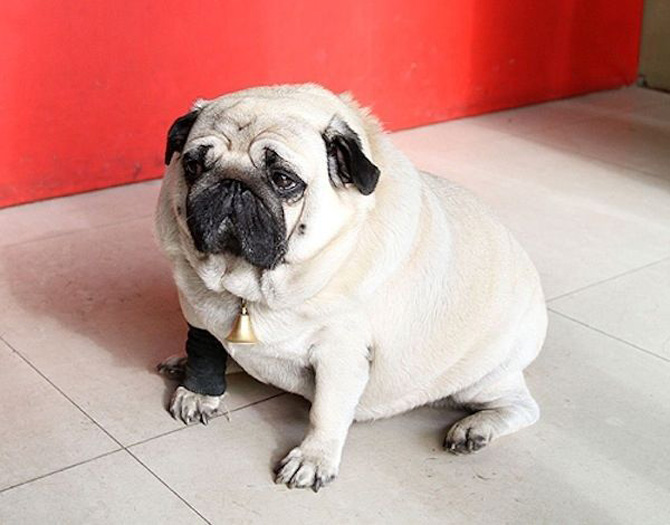Sadly, more and more Aussie pets are becoming overweight and obese. However, as responsible pet parents, the onus is on us to keep our pets at a healthy weight. Here’s the lowdown on obesity in dogs and what we, as loving pet owners, can do to manage the risk factors.
The Pet Food Industry Association Australia (PFIAA) reports that 41% of dogs in Australia are either overweight or obese. That’s almost half our canine chums! According to the PFIAA, obesity in pets is a really important issue, as it can lead to a reduced quality of life for our beloved pets. Certainly, being overweight can predispose dogs and cats to serious and even fatal illnesses. The PFIAA advises, “The major factor leading to obesity in pets is that the pet is eating more energy than it needs and, in many cases, overweight pets get little exercise. Put simply, it is a case of too many calories in and not enough calories being used throughout the day.”
Sounds pretty obvious, doesn’t it? So, why is it that so many of us have overweight dogs and that the problem of obesity in dogs is growing?
Spotting the signs of obesity in dogs
Certainly, some owners simply don’t recognise that their dog is obese. Particularly when weight gain is gradual, it can be difficult to notice. However, According to The Kennel Club, the following signs may be indications your dog is obese.
- It’s difficult to see or feel the dog’s ribs, spine or waistline
- Abdominal sags down
- Face looks bigger or rounder
- Dog is reluctant to go for walks or lags behind
- Excessive panting
- Tiredness/lethargy
- Needs assistance getting in and out of cars
- Refuses to move or engage in play
Reasons and risk factors for obesity in dogs
Sure, you love your dog no matter what size he is. However, it’s important to remember that obesity in dogs can cause serious health risks. It’s also essential to think about what it is you might be doing that is contributing to your fur pal’s weight problem. Key things that pet parents tend to do that leads to weight gain in dogs includes:
- Giving table scraps
- Not measuring out food at mealtimes
- Allowing multiple dogs to eat together (the greedy dog will get the lion’s share!)
- Not giving your barking buddy adequate exercise
Additionally, factors such as hormones, genetics, age, and whether or not a pet has been neutered can affect our canine chums’ weight.
What to do about your porky pooch
If you believe your fur pal is looking a bit tubby, it’s time to take action! Thankfully, there are lots of things you can do to assist your pooch to shed a few pounds. Why not think about:
- Assessing his food intake (amount and quality of the food)
- Increasing his daily exercise
- Taking a trip to your local vet for a check-up and some professional weight loss advice
- Feeding your dog earlier in the day, allowing more time to burn off calories
- Feeding smaller portions throughout the day if your dog appears hungry (but feeding no more than his total requirements)
- Avoiding scraps in between mealtimes
Patience and perseverance are paramount when it comes to helping your beloved dog lose weight. Just like in humans, it can be a hard and slow slog to shift those extra kilos.
As such, having a weight loss plan can be useful. It can include details of food portions, what you are feeding your dog, as well as daily exercise. Particularly if you have young kids, it’s important to explain to them why you are putting Fido on a diet (i.e. the health risks associated with obesity in dogs) and what they can do to help (i.e. no more feeding the dog snacks!).
Have you helped your dog to lose weight successfully? We’d love to hear your tips.
Information sources:
- Incidence, risk factors and managing obesity in dogs and cats. Pet Food Industry Association Australia (PFIAA). Jan 2020. Accessed online March 2021 via: https://pfiaa.com.au/incidence-risk-factors-and-managing-obesity-in-dogs-and-cats/
- Obesity: A common problem in dogs. The Kennel Club. Accessed online March 2021 via: https://www.thekennelclub.org.uk/health-and-dog-care/health/health-and-care/a-z-of-health-and-care-issues/obesity/
Image source: Bangkok Post







Using a measuring device with a line on it is very helpful. Just a bowl with a mark where you should fill up to is enough. To let your dog lose weight you just adjust it down and keep at it for some weeks until you see the results. Its not difficult, but you have to persevere and be consistent every day.